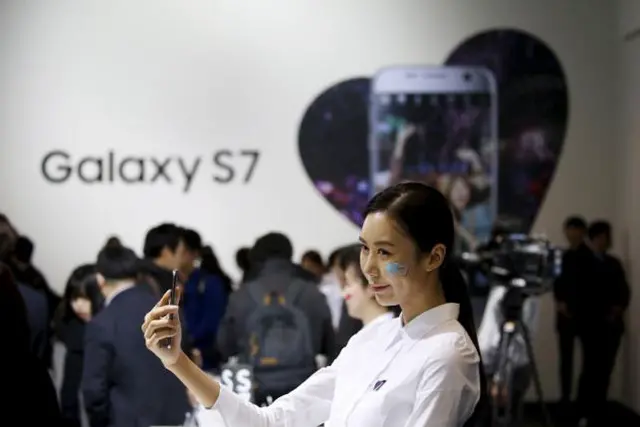From the way it chooses smartphone components to the models it brings to market, Samsung Electronics has undergone a painful process of breaking from its past to reverse a slide in its handset business.
For example, the world’s largest smartphone maker agonized over camera specs for its flagship Galaxy S7 until the last moment — ultimately defying industry convention by opting for fewer pixels in exchange for improved autofocus features and low-light performance, a move that contributed to early success.
It also pared back its product line-up, overcoming internal resistance, enabling it to streamline production, an executive said.
The handset business has now stabilized, and had its best profit in nearly two years in January-March, though historically low smartphone industry growth still leaves Samsung looking for the “next big thing.”
“We’ve now gotten to a point where we can secure a baseline profit even if the market stagnates, so long as we don’t make a bad mistake,” said Kim Gae Youn, vice president in charge of Samsung’s smartphone product planning. “I’m confident we can hold our ground.”
After peaking in 2013, a sharp drop in mobile profits exposed Samsung as slow to adjust to the changing market: Its budget devices were overpriced and unappealing versus Chinese offerings, and the 2014 version of its Galaxy S flopped.
That prompted a cull among executives and stoked investor worries Samsung might not be able to recover as rivals including Apple and China’s Huawei Technologies and Xiaomi gained market share at its expense.
There was no sweeping, across-the-board fix. Rather, Samsung embarked two years ago on an overhaul that included a shift from a phone-for-all-needs approach towards a line-up that emphasized economies of scale.
It revamped design, using metal frames and curved screens, and gave high-end features such as organic light-emitting diode (OLED) screens to its low- and mid-tier products.
As Samsung prepared to launch its Galaxy S7 phones this year, executives went back and forth over whether to use a 12-megapixel rear camera that shoots better in the dark and has improved auto focus, or stay with a 16-megapixel count. At the last moment, they opted for 12-megapixels — a rare step down in an industry fixated on higher numbers.
This meant a change in approach for a company known to tout the highest specs for its flagship products, and executives required convincing, Kim said. They were swayed by data showing consumers want more than just a high pixel count.
“In the past, based on our past decision-making process, we never would have gone back,” Kim said in an interview at Samsung’s headquarters campus in Suwon, south of Seoul.
The move worked. More than half of U.S. S7 buyers surveyed cited camera quality as a key selling point, compared with a third of all smartphone buyers in the first quarter, according to Kantar US Insights.
The same mindset shift gave Samsung confidence to release a Galaxy 7 series that looks similar to its predecessor. This incremental upgrade drew initial skepticism, but the S7 phones have beaten expectations and could set a new first-year sales record for the South Korean firm.
(REUTERS)
 简体中文
简体中文

